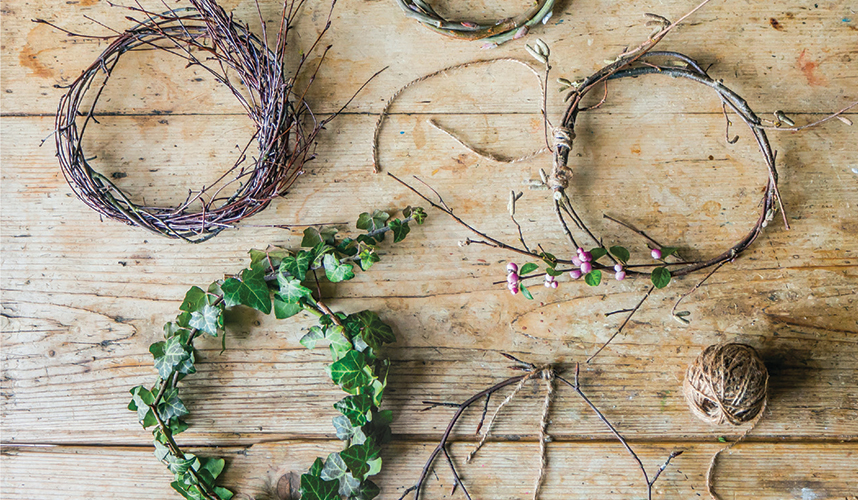You’re also likely to be reluctant to put them away in the New Year. Wreaths made from foraged twigs are beautiful enough to be hung on doors and walls all year round.
The simplest wreaths of all – and perhaps the most elegant – consist of a single branch, stem or bundle of fine stems bent carefully into a circle and fixed in place with galvanized wire or garden twine. A collection of such smallish, delicate wreaths made this way and hung on a wall bring a lovely festive feel to a room and are easy on the pocket.
*A note about cutting material from trees and shrubs: if you’d like to cut material from someone’s garden, then do ask permission. Similarly, ask permission if you’d like to take plant material from parks. In the countryside, removing a few stems of ivy or a branch or two of beech will not do harm, but do not take too much as it may weaken the plant.
Materials
- Secateurs
- Plant material collected from your garden, local park or countryside*
- Wire cutters
- 1–2mm (14 gauge) galvanized wire, garden twine or raffia
- To make a large wreath for your front door or to hang on a chimney breast or wall, choose at least two twigs or stems, around 40–60cm (15–25in.) long. If you’re using birch, find two bundles of fine branches about this length.
- Cut several lengths of galvanized wire or garden twine, around 20cm (8in.) long.
- If your twigs or stems are from hazel or willow then flex them over your knee once or twice before you begin, to encourage them to curve.
- Lay the thick end of one of your twigs or bundles so that it overlaps by several centimetres with the thin end of another. Bind the two together with wire or twine. If you’re using galvanized wire, wind it four or five times around both twigs as tightly as you can.
- Bring the other ends of your stems or bundles together and bind again.
- You may need to tie the twigs together at a few more points around your wreath to ensure it is sturdy and forms a rough circular shape.
- Hang on a door, a wall or with other wreaths to make a gorgeous display.
MORE INSPIRATION
READ Find more great projects in Emma’s book Making Winter published by LOM Art priced £14.99







